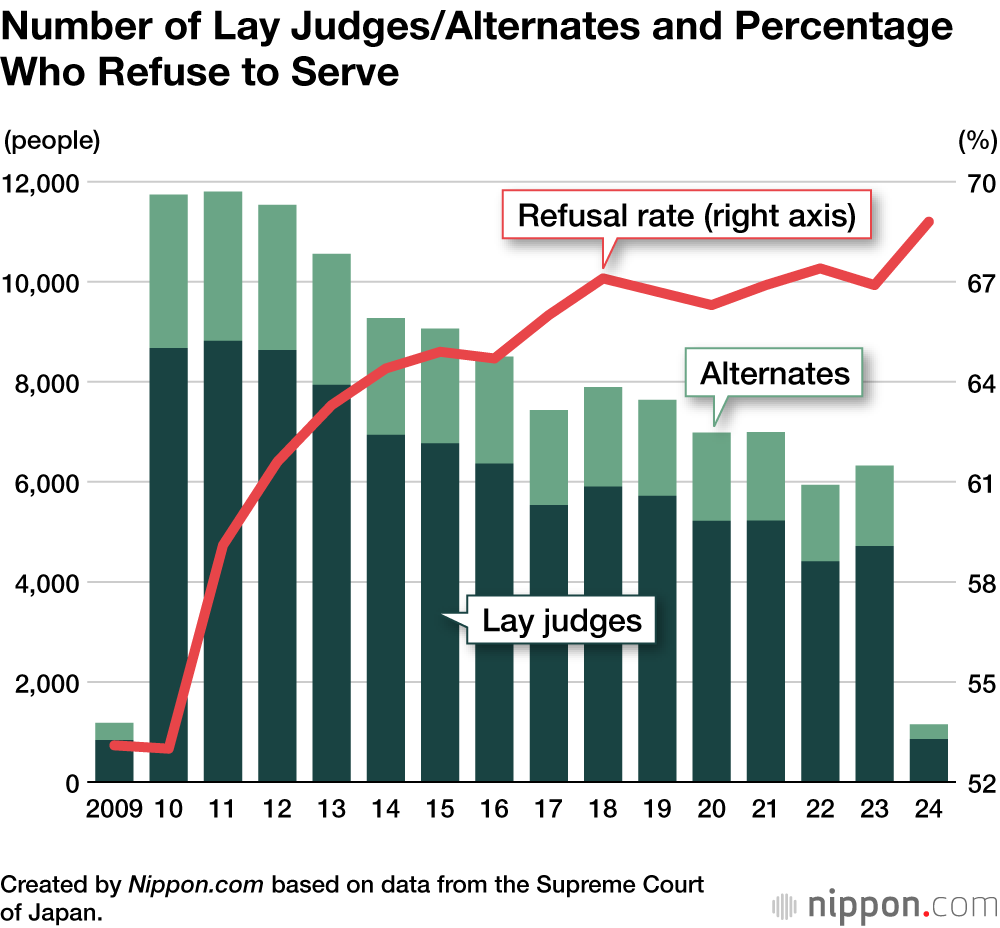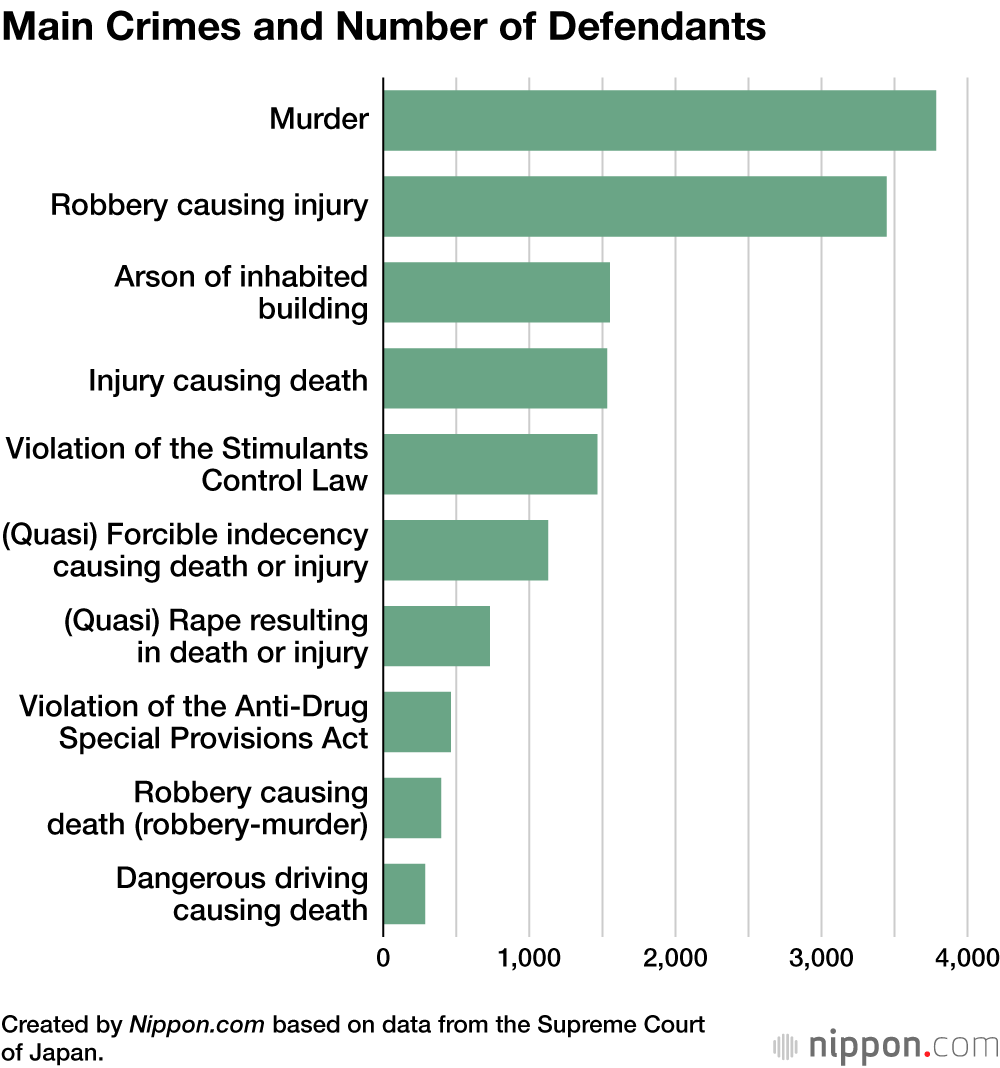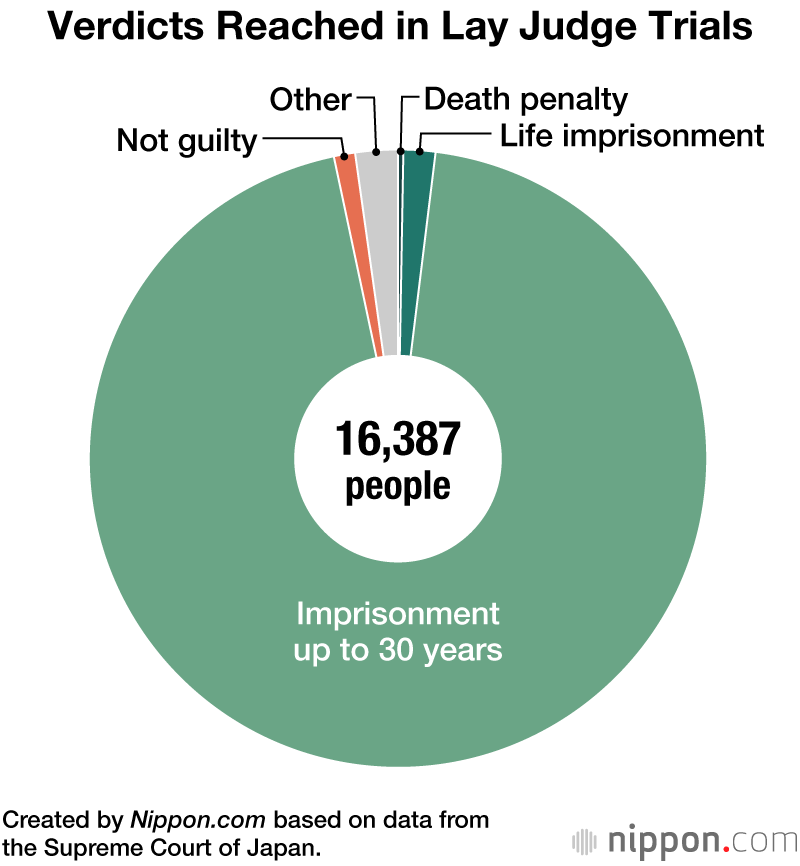
Japan’s Lay Judge System Marks 15 Years
Politics Society Lifestyle- English
- 日本語
- 简体字
- 繁體字
- Français
- Español
- العربية
- Русский
It is now 15 years since Japan instituted the lay judge (saiban’in) system on May 21, 2009 in order to reflect public sentiment in criminal cases. Six lay judges are selected at random from electoral rolls to participate in criminal trials together with professional judges to determine guilt or innocence and to hand down decisions on sentencing. According to information released by the Supreme Court of Japan, 124,017 people have served as lay judges or alternates up to the end of February 2024.
The percentage of citizens who can be chosen as lay judges but refuse to serve has risen from 53.1% in 2009. After a slight dip in 2010 to 53.0%, it climbed steadily for several years. It has remained high in recent years, at around 65% to 69%.
Lay judge trials are held for crimes above a certain level of seriousness, such as murder, robbery, and arson. Due to this, the sentencing is heavier and of the 16,387 defendants who had lay judge trials, 46 were given the death penalty and 302 received life imprisonment. Less than 1%, or 157 people, were found not guilty.
(Translated from Japanese. Banner photo © Pixta.)


